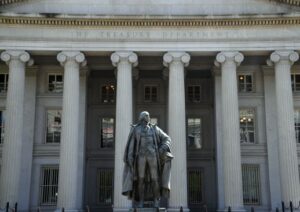By Cate Chapman, Editor at LinkedIn News
A tsunami of Treasury bills — or debt issuance by the federal government — is set to hit financial markets after a deal on the nation’s spending limit was sealed last week. The Treasury may seek to borrow as much as $850 billion this summer to refill coffers that had been drawn down to less than $50 billion during the partisan fight over the debt ceiling. However, the new issuance might roil markets, sending borrowing costs higher, even as the Federal Reserve looks set to pause a yearlong interest rate-raising campaign.
By Nadia Vanderhall
Finance Brand Marketing Expert
The debt ceiling deal is done but it also presents two spin-offs of scenarios that will impact wallets differently:

Treasury’s $1 Trillion Debt Deluge Threatens Market Calm
wsj.com • Subscription may be required











– Treasury Bills: The Treasury General Account (TGA) needs to be refilled and the Treasury is seeking to borrow as much as $850 Billion (upwards of over the summer to keep the balance.Could both sets of wallets see a reverse impact due to the debt ceiling “lift”? When it comes to Treasury impact, equity markets have reacted not so well to lacking liquidity conditions resulting from debt-ceiling deals.While the Federal Reserve continues to hike interest rates, Americas find that impacting how they spend and borrow along with The Tresurary finding a similar fate. They could face borrowing at rates near 6%, up from 0.1% less than 2 years ago. This could be the thing that makes the markets react to how many have been waiting throughout the pandemic. As we can see that the shift from the stock market is reliant on the Fed’s liquidity has happened – drastically.Which wallet are you watching more? Me, both.
#debtceiling #debt #economy #personalfinance #studentloans #treasury